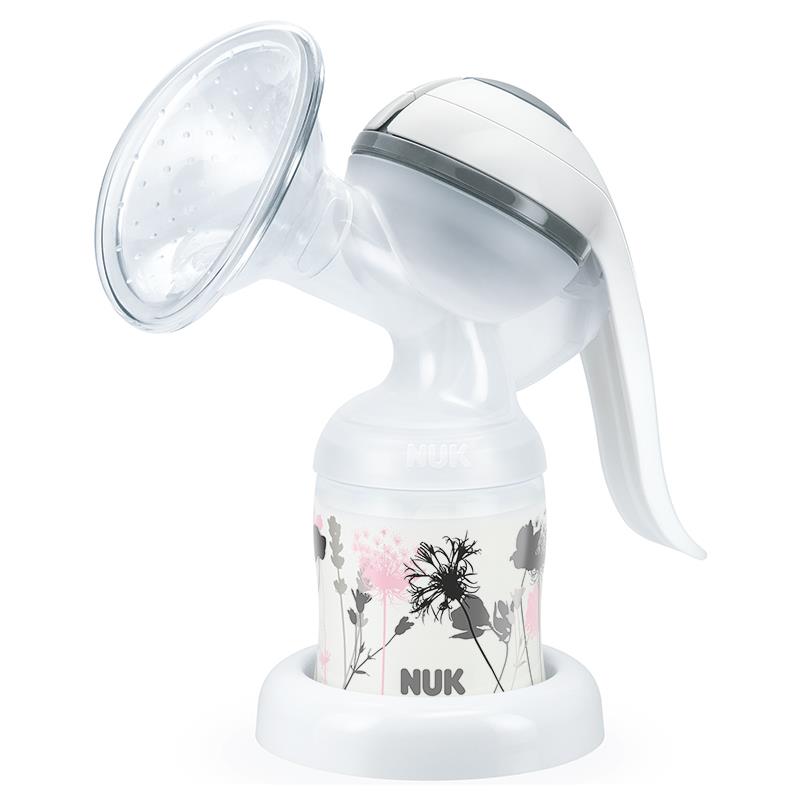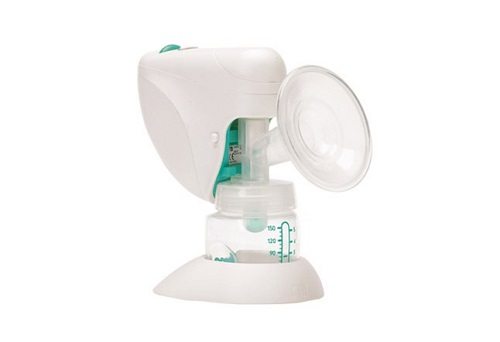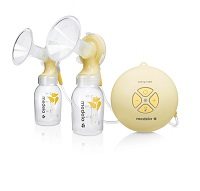
For the first-time mum-to-be contemplating breastfeeding, choosing a breast pump can be, frankly, bewildering. Here’s what to know…
You’re pregnant and you’ve been reading up a storm on how best to care for your baby. All the literature has convinced you that breastfeeding is the way to go. But looking at breast pumps can have even the most confident women clutch their boobs in fright. Not to mention the noise they make! A breast pump, however, can be a useful piece of kit for breastfeeding mums. They allow you to get some independence back from round the clock feeds, and gets your baby used to being fed by other people (look at you dada!).
When should I buy a pump?
The good news is, experts recommend that you don’t pump immediately. It takes a few days for your milk to come in, and longer for your supply to get established. Ideally you should wait six weeks to get your baby used to breastfeeding and for a feeding rhythm to be established before reaching for the pump. But breastfeeding is hard, so don’t invest in a pump until you know that you will use it. Instead, read up on the different types, know your preference and get it when you need it.
What is a manual breast pump?
A manual breast pump is probably the most simple type of pump, and is good if you’re an occasional pumper. The suction cup goes over your breast and you squeeze the handle to create a vacuum that stimulates the milk flow. Manual pumps can take some getting used to, but as they resemble a baby’s sucking action, they feel a little more natural than an electric pump. They are lighter and cheaper too. And as there is no motor noise, your baby can feed from one breast while you pump the other. You can also control the suction, which means a manual pump may be more comfortable than an electric one.
What is an electric pump?
Some mums find that electric pumps are easier than manual pumps. They work by placing the cup on your breast, turning it on and hey presto; the pump does the work for you. Generally speaking, an electric pump allows you to extract more milk in less time, which is useful for both busy mums or mums who’ve gone back to work. Models range from simple one-breast pumps to more expensive products that may do double-pumping action. Some will also allow you to adjust suction levels. Electric pumps are not without their downsides, however; they tend not to be as portable as manual models and can be noisy and cumbersome.
How do I find the right pump for me?
Firstly, do your research and ask friends who have used pumps for advice and recommendations. Every pump has its advantages and disadvantages, so what suits someone mightn’t suit you. Think about your budget, how often you need to express and where/when you will express. If you want to express while out and about, a manual pump might be the most portable option. However, if you want to start pumping because you’re returning to work, then time is of the essence and a single or dual electric pump might be the most efficient. If you need to express a lot and often, a hospital-grade pump might be the best option – as these can be hugely expensive, renting one might be best – see www.medicare.ie.
What features should I look for?
Again, this depends on your needs. First, look at the cycle time. A nursing baby sucks approximately 45 to 55 times each minute, and the closer a pump is to this range the more effective it will be. Anything below a cycle of about 25 will be slow and could cause pain, as the breast will be manipulated more than necessary. Look for an adjustable vacuum that will allow you to change the settings to suit you. A double pump means that you can cut pumping time in half; it also boosts milk production by emptying both breasts, so is ideal for mums expressing for premature babies or exclusively expressing. If portability is an issue, you might want a model that has the option to be run on batteries in case there’s no electrical outlet (but don’t go for a battery only model, as batteries can waste easily and the pump can be inefficient). Finally, make sure that you’re comfortable with using, cleaning and assembling your chosen model. Talk to other breastfeeding mums in your class or in your circle of friends for advice.
Our favourite breast pumps
Nuk Jolie Manual Breast Pump, €39.99
Innosense Electric Breast Pump, €79.95, Mothercare
Medela Freestyle Double Electrical Pump, €329.99
maternity & infant
Originally posted 2016-08-30 16:17:21.











